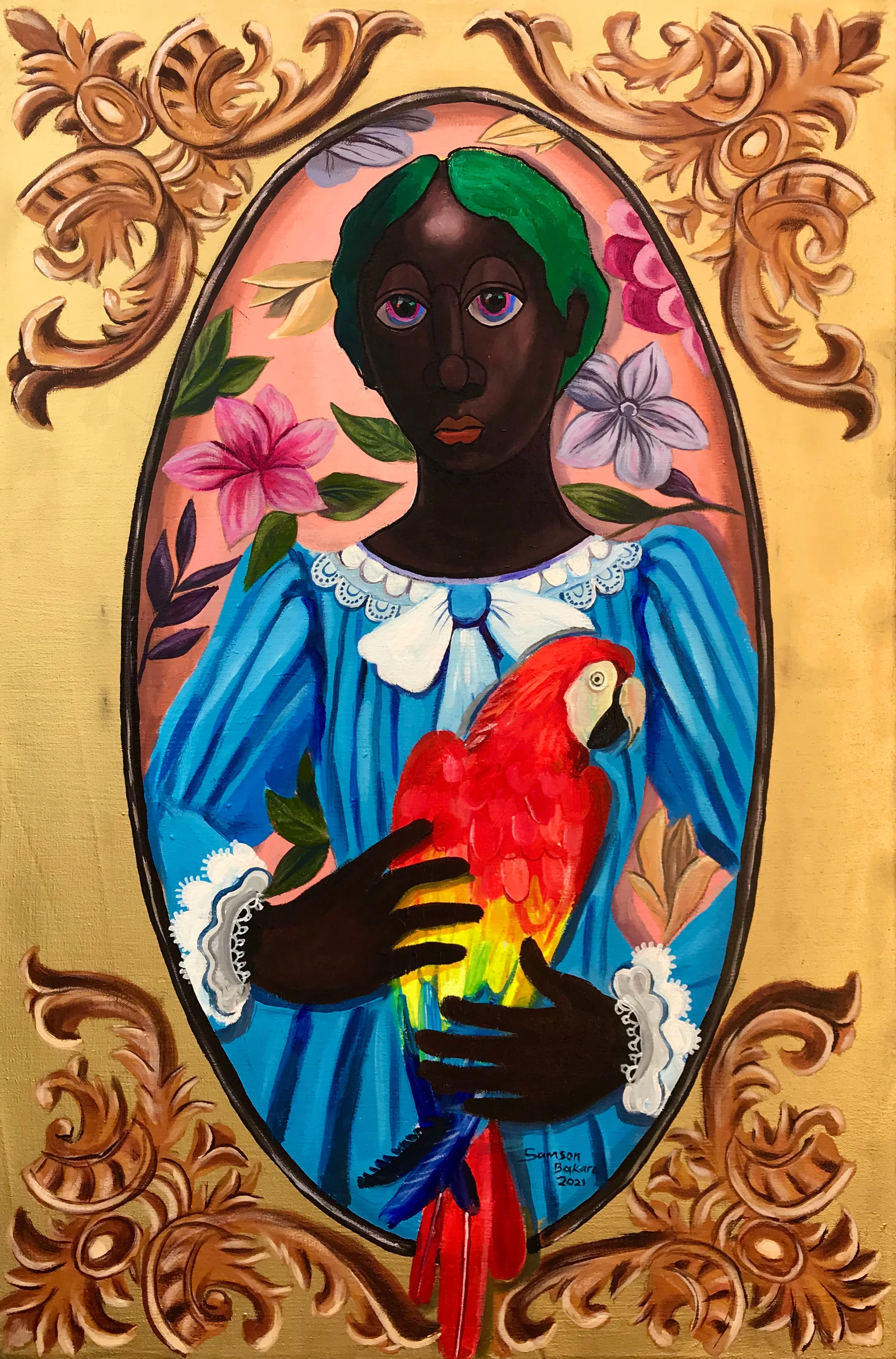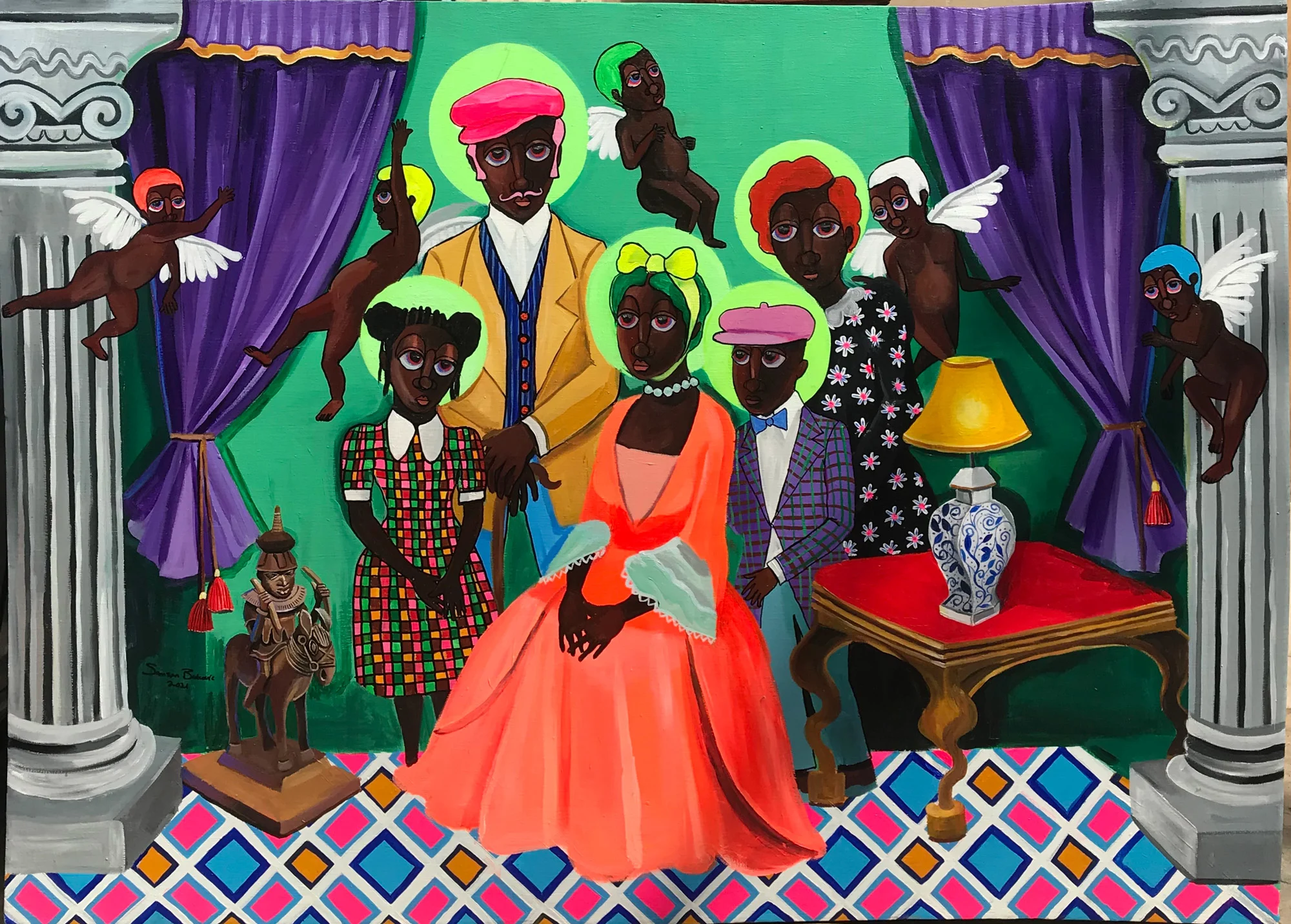
Lagos-based artist Samson Bakare describes his paintings as “time machines,” as they venture back into the past and depict an African society that might have existed had history taken a different turn. He paints Black people in positions of power, in full control of their surroundings. He explains to Jareh Das how he hopes that by rewriting history, he can project a better future.
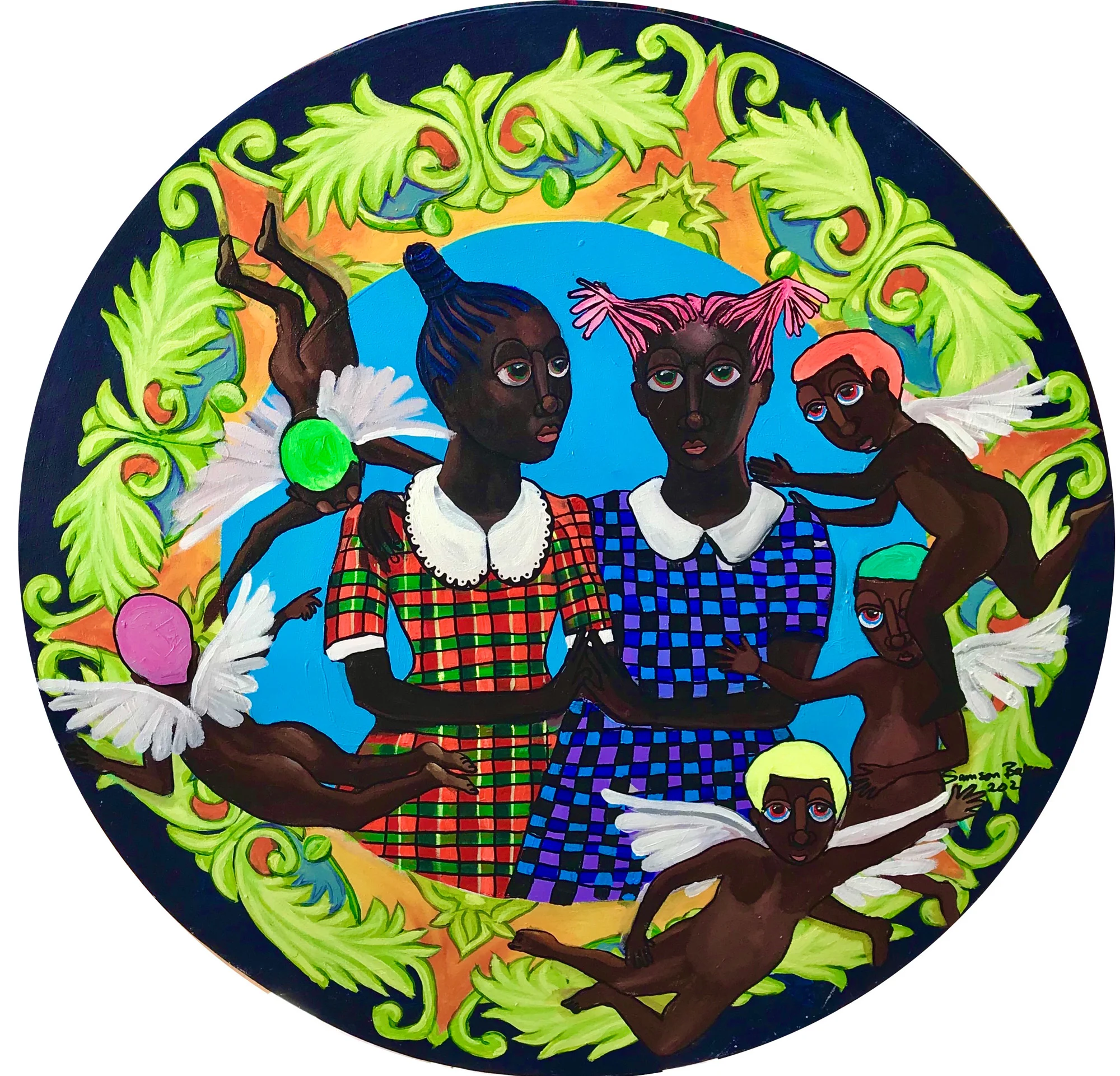
Based out of Lagos, the city where he grew up, Samson Bakare has spent the last few years building a unique painting practice that celebrates Black life through portraits that rewrite a more positive history for it. He focuses on Black figures, showing them enjoying moments of leisure as a way to challenge Western art histories that have long marginalized them.

He sees his paintings as “time machines.” “My work is really about theories of time. I hope I can provide a platform for people to reimagine the past and project a better future,” he says. “In a sense, these paintings are anti-imperialist, and I like to include Pan-Africanist thought as a part of the narrative.” Pan-Africanism is the school of thought that believes people of African descent should join together as one, and it emerged to counter the centuries-long traditions that erased, misplaced or misinterpreted the culture and art of African people on the continent and in the diaspora.
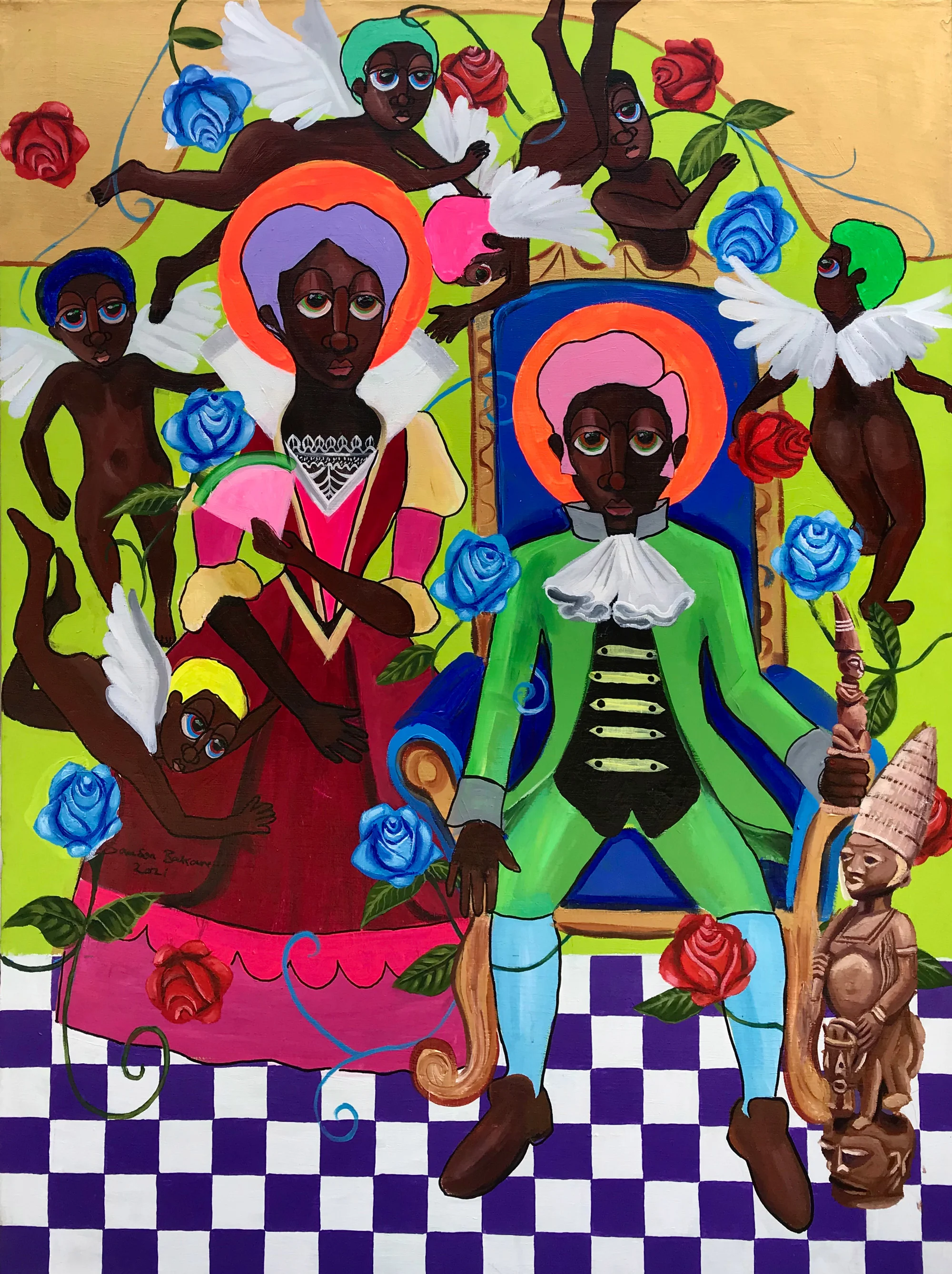

Bakare’s anti-imperialist stance can be seen in paintings like Circa 1885 (2021). The large portrait’s title is a reference to the Berlin Conference of 1884, also known as the “Scramble for Africa,” which involved major European Powers laying claim to territory on the continent, leading later to the legitimizing of colonialism. In Bakare’s painting, an aristocratic Black couple stand front and center in a royal court, framed by Black cherubic angles with multicolored hair. A domesticated leopard standing between this Lord and Lady is a reference to the court of the Benin Empire where the Oba (king) kept these animals in the palace as pets as a way to show their power over the wilderness.
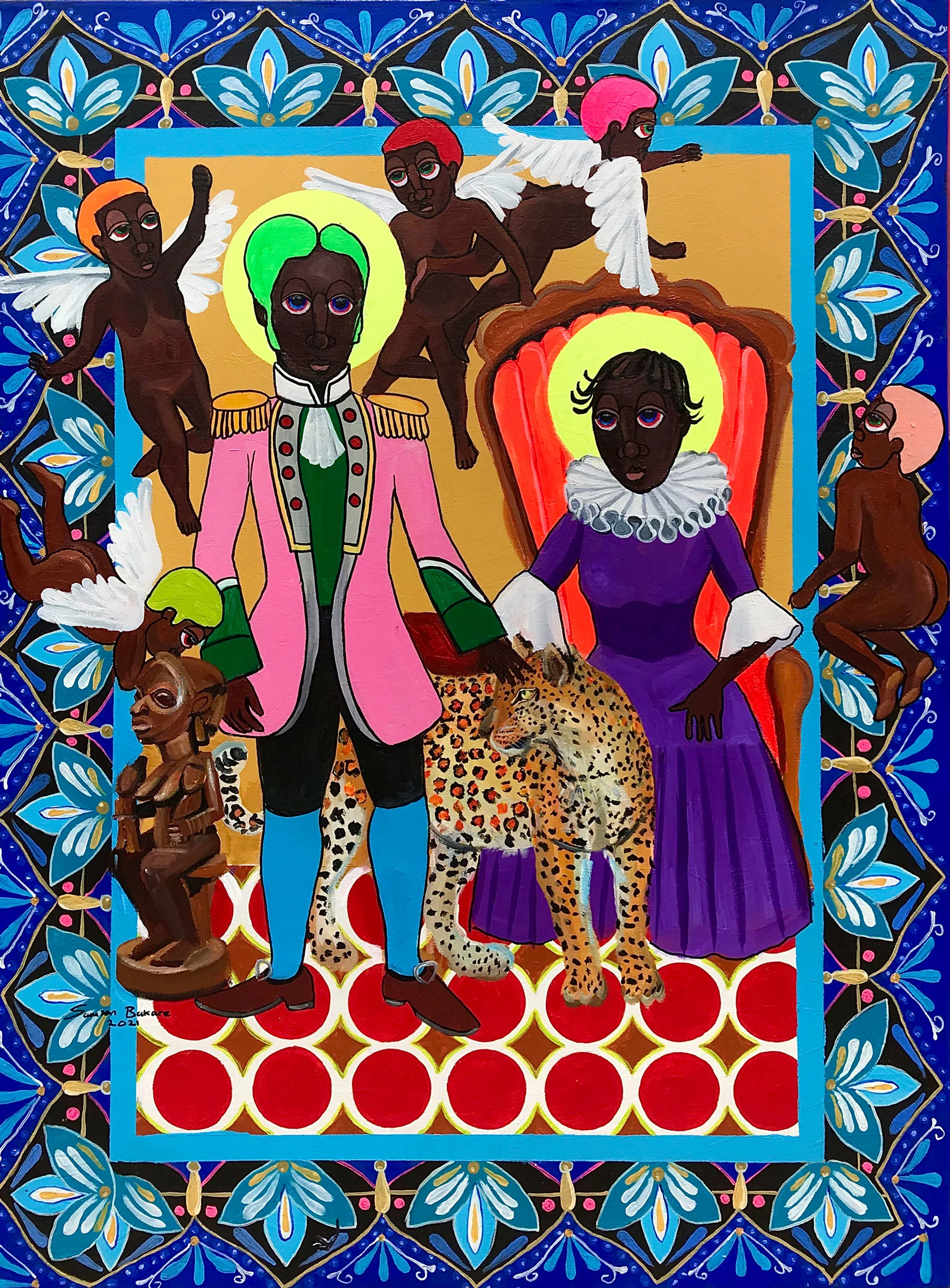

Bakare’s own introduction to art began early and his biggest influence is his architect dad. He grew up in a home filled with hand-drawn renders and sketchbooks at a time long before AutoCAD and other digital drawing tools took hold. “Watching my dad sketch and create pencil drawings was something really profound to witness growing up. I wanted to copy him and this made me curious about drawing,” he says.
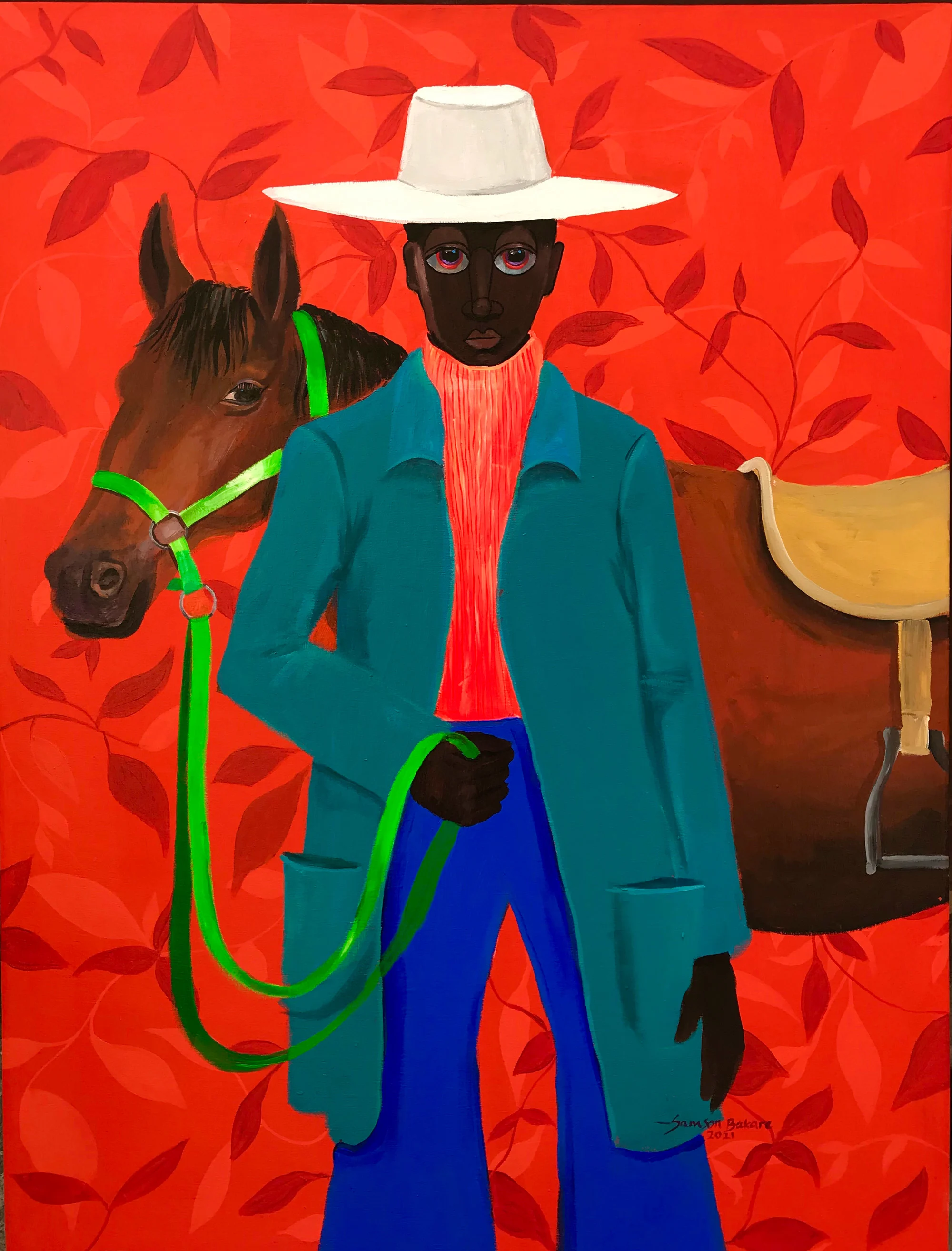
This curiosity flourished even further in his teenage years when he would co-create comic books with friends and experiment with text, color and drawing. His influences range from Coptic art to Victorian paintings, and his thinking is rooted in Nigerian indigenous culture. He cites artists like Kehinde Wiley and Peju Alatise, both of whom focus on deftly representing the human condition from an individual perspective.
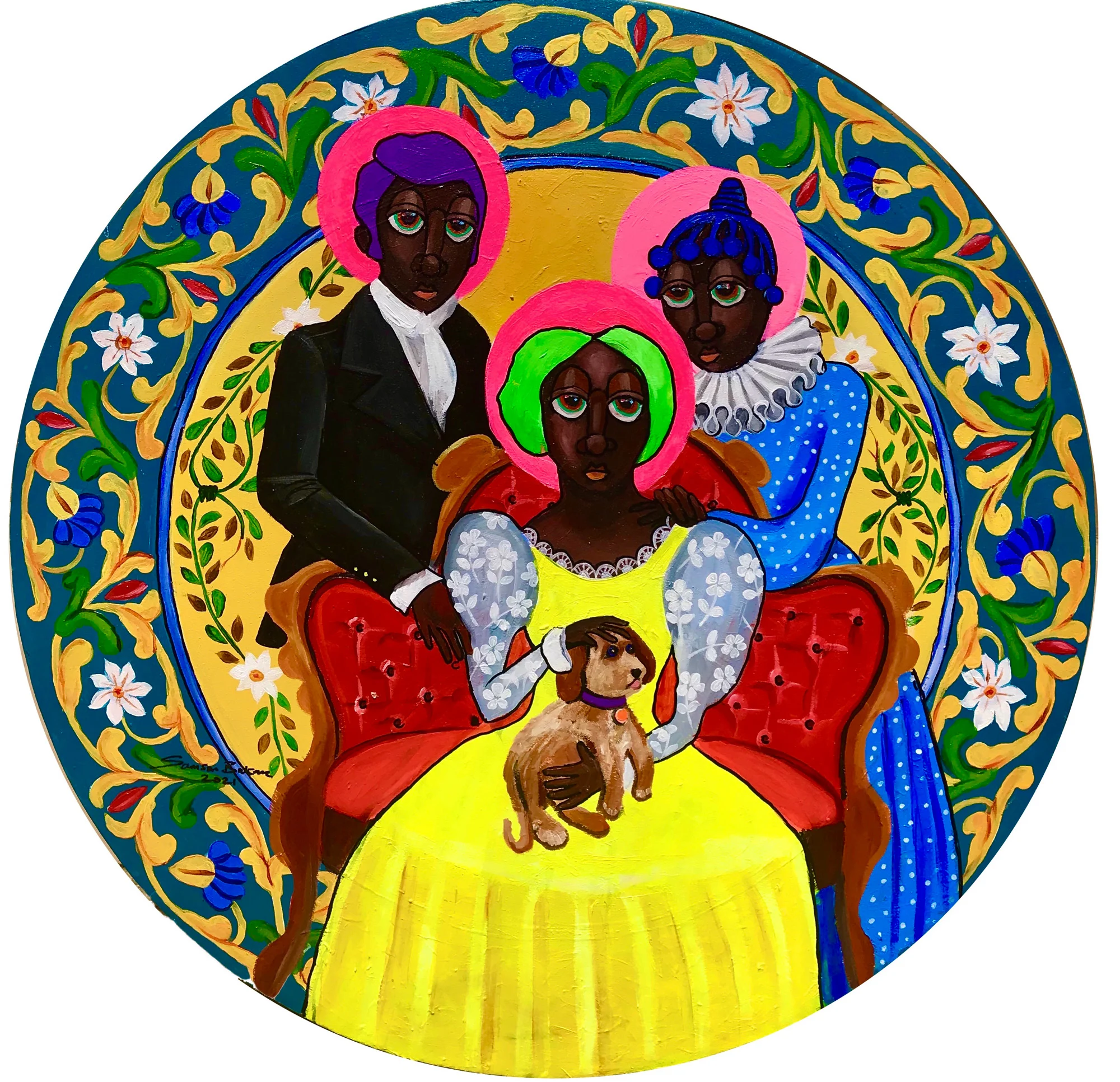
In his Family Portrait series, which began in 2019, he focused on imagining an abundance of wealth and a higher social status for Black individuals if history had taken a different turn. This was his response to the earth-shattering events of colonialism and the transatlantic slave trade, and he sees painting as a way to reconcile past injustices and suggest new Black futures. “Our strategy should not only be to confront empire but to lay siege to it,” he says. “To restore pride, to heal the broken and retell the stories.”
